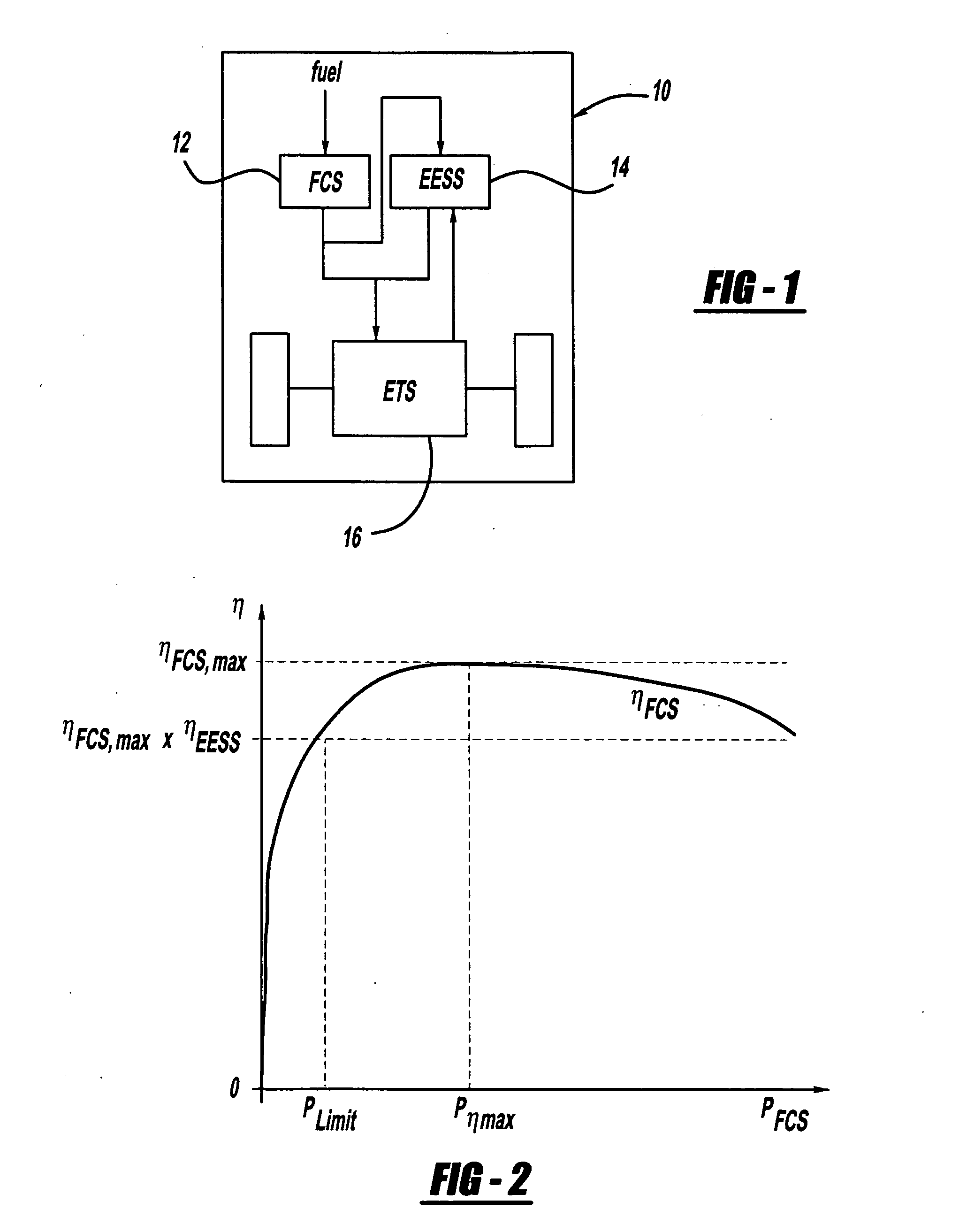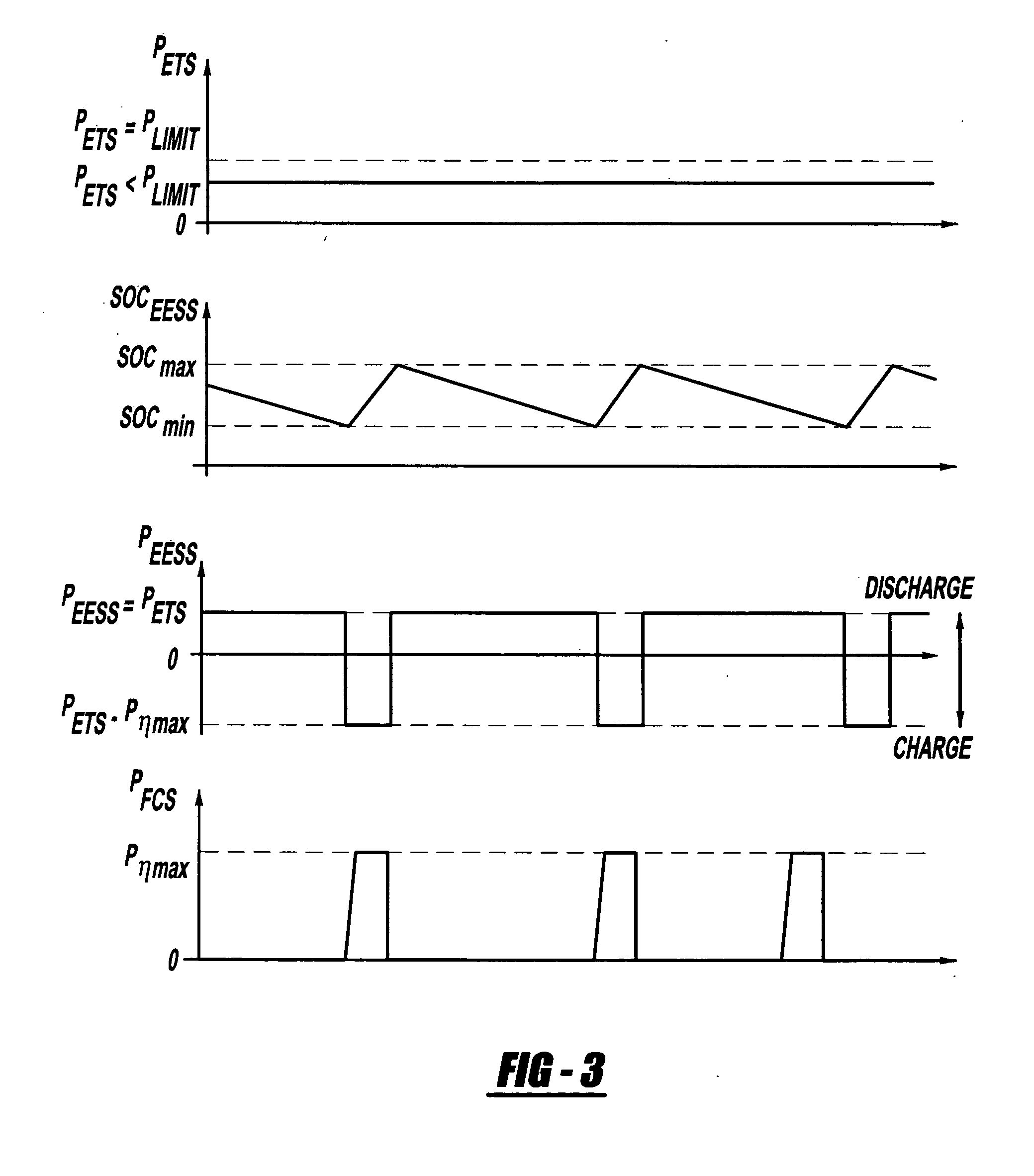Efficiency optimized hybrid operation strategy
a hybrid operation and efficiency optimization technology, applied in position/direction control, special data processing applications, dc source parallel operation, etc., can solve the problems of low efficiency of hybrid operation strategy, low efficiency of fuel cell system for vehicle, and relatively high manufacturing cost of meas, etc., to achieve the effect of increasing system efficiency
- Summary
- Abstract
- Description
- Claims
- Application Information
AI Technical Summary
Benefits of technology
Problems solved by technology
Method used
Image
Examples
Embodiment Construction
[0018]The following discussion of the embodiments of the invention directed to an algorithm for optimizing the efficiency of a fuel cell hybrid vehicle is merely exemplary in nature, and is in no way intended to limit the invention or its applications or uses.
[0019]FIG. 1 is a block diagram of a fuel cell hybrid propulsion system 10 including a fuel cell system (FCS) 12, an EESS 14, and an ETS 16. The EESS 14 can be any suitable device, such as a battery, an accumulator, a super-capacitor and combinations thereof. Further required power electronic components are not shown to reduce the description to the necessary elements. As will be discussed in detail below, the present invention proposes an algorithm for providing efficient operation of a fuel cell system by determining when the requested power from the ETS 16 will be provided by the fuel cell system 12, when the requested power from the ETS 16 will be provided by the EESS 14, when the requested power from the ETS 16 will be pro...
PUM
 Login to View More
Login to View More Abstract
Description
Claims
Application Information
 Login to View More
Login to View More - R&D
- Intellectual Property
- Life Sciences
- Materials
- Tech Scout
- Unparalleled Data Quality
- Higher Quality Content
- 60% Fewer Hallucinations
Browse by: Latest US Patents, China's latest patents, Technical Efficacy Thesaurus, Application Domain, Technology Topic, Popular Technical Reports.
© 2025 PatSnap. All rights reserved.Legal|Privacy policy|Modern Slavery Act Transparency Statement|Sitemap|About US| Contact US: help@patsnap.com



